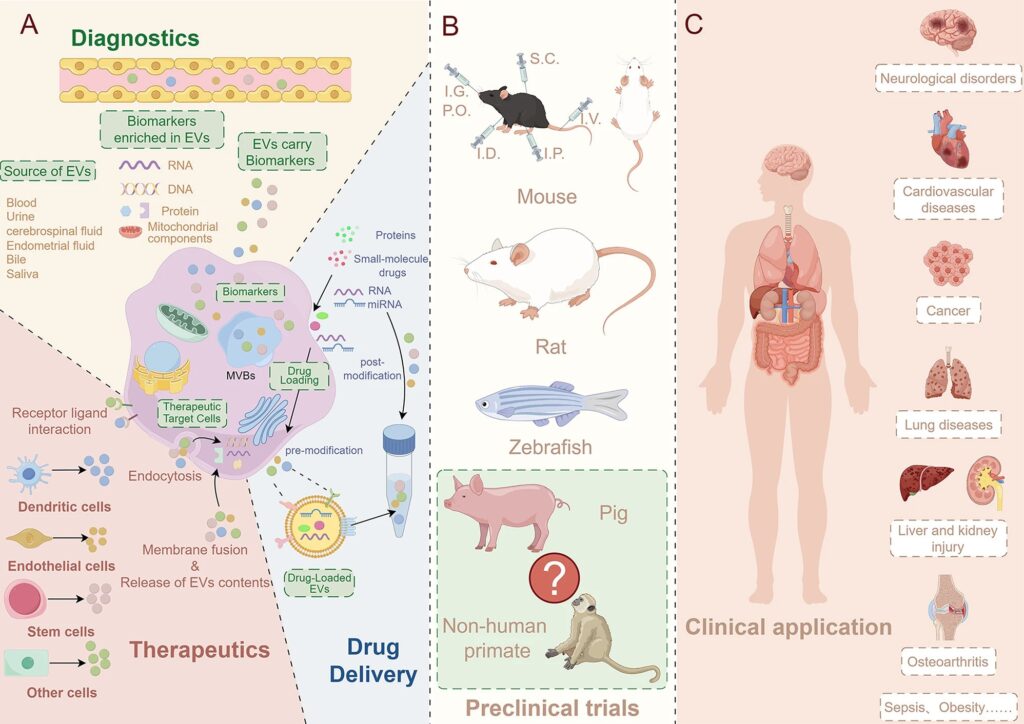Tiny Messengers, Big Impact Exosomes as Gatekeepers of Mitochondrial Function

Mitochondria are essential for cellular energy production, but disruptions such as oxidative stress, calcium imbalances, and mitochondrial DNA abnormalities can lead to dysfunction, contributing to various diseases. Extracellular vesicles (EVs), small nanovesicles that facilitate intercellular communication, play a crucial role in this process. They transport proteins, lipids, and nucleic acids and are categorized into small EVs (sEVs, <200 nm) and large EVs (lEVs, >200 nm).
Recent study by researchers from Jiangsu University has identified EV subtypes enriched with mitochondrial components, including intact mitochondria. These vesicles can transfer mitochondrial elements to recipient cells, influencing their function, homeostasis, apoptosis, and reactive oxygen species (ROS) generation. The ability of EVs to modulate mitochondrial activity has sparked interest in their therapeutic potential. Scientists are now exploring engineered EVs as targeted delivery vehicles for mitochondrial therapies, opening new possibilities for treating diseases associated with mitochondrial dysfunction.
Future Perspectives:
- Unraveling the mechanisms behind EV-mediated mitochondrial regulation to enhance therapeutic applications.
- Developing EV-based therapies for conditions such as neurodegenerative diseases, cardiovascular disorders, and cancer.
- Engineering EVs for improved targeting and safety in clinical applications.
Figure Description: Clinical application potential of EVs (by Figdraw). (A) EVs are abundant in various bodily fluids, and their content levels reflect the type and activation status of their parent cells. This makes them valuable biomarkers for diagnosing mitochondrial dysfunction related diseases. Moreover, natural EVs contain a variety of bioactive substances that can enter receptor cells through multiple pathways to regulate the mitochondrial function of target cells, making them promising therapeutic agents for mitochondrial dysfunction related diseases. Furthermore, EVs are also high-quality drug nanocarriers that can be engineered to deliver therapeutic drugs in a targeted manner. (B) Different preclinical models have been developed to evaluate the biology of endogenous or injected EVs in vivo. (C) Prospects for clinical applications of EVs
© Image: Li, J., Wang, T., Hou, X. et al. J Nanobiotechnol 22, 487 (2024).